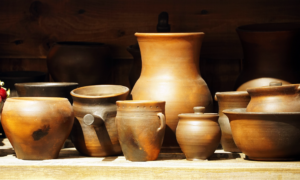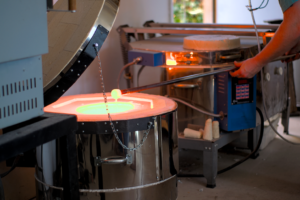Have you ever wondered if you are doing your artistic glass masterpieces with the best resources, the best lampworking tools, and the best quality instruments?
Perhaps you have already searched for and evaluated the best quality and price relationships between many lampworking tools, since you are really lacking some specific instrument or tool you need for your creativity to expand, or simply want to experiment with new tools and the new techniques that these imply.
Perhaps you have some personal goal or perspective on your artistic aspirations in mind when you think about purchasing new glass working equipment. Maybe you are having insights into your artistic glass work, and you know exactly what you want but do not really know how to get there, which lampworking tools you need or even what they are called.
Well, if that is your case, keep those inner insights in mind, keep imagining what you want to achieve with your creations, because that is the key to get to know which are the best lampworking tools for you. Nonetheless, it is crucial to know the very basic aspects of some essential tools, in order to really value which are the best lampworking tools not only for the present you, but, maybe, for your goals in the near future.
By expanding your knowledge on the matter of instruments and equipment that you could use on your glass working processes, you will be able to grow your techniques and obtain beautiful masterpieces with interesting results.
What About Lamps?
Have you ever wondered where the term ‘lampworking‘ comes from? Why is the art of molding glass with fire coming from a torch or special kiln named like that? What does it have to do with lamps?
Well, as you can imagine, the source of fire used for glass working was, at first, the oil lamp. When glass artists wanted to raise the flame of the oil lamp, they would blow air into it through a pipe or using foot powered bellows. This process has been, little by little, replaced by new technologies that developed new ways of creating steady flames and temperatures.
Imagine you would like to heat a piece of glass for a relatively long period of time since you have a specific objective, like changing the shape of a spherical bead you forgot you would mold more like a disk. You need the temperature to remain very constant through the whole process, and this, naturally, is not a problem we would even think of with glass working today.
But consider that, in the past, this needed a lot of effort, when, as we described, artists would pump oxygen into the oil lamps, with pipes or bellows, ensuring that oil vapors burned more efficiently and directed the flame.
Since glass working artists needed nice, steady flames to achieve temperatures that would allow the glass to melt and stay that way long enough to shape it, the equipment to achieve this was developed and transformed into what exists today and is marketed as specialized lampworking or flameworking equipment.
Which are the best lampworking tools?
Check out our list that describes the best lampworking tools for your daily practice:
- Torches for lampworking
Stationary torches are commonly called bench burners, and they will represent an essential equipment for you if you want to work your glass masterpieces while holding and directly moving the glass and other tools to mold it (that we will see next).
The steady flame it generates can be adjusted by changing the oxygen flow, and this can be modulated to some degree depending on the model (the more features you can adjust, the cost goes higher).
- Molds
There is no rule that limits the shapes that molds can have, and it is precisely that that makes them especially good for the artistic creation of glass working. If you think of that for a second, you may realize that everything could be a mold when in the adequate context.
The thing is that you are molding a fluid that is so hot that it could make a real mess to whatever it touches. That is why molds are usually made of graphite, which allows pieces to solidify in a great soft solid template and stick not to them.
Molds can too be made of different metals, usually brass, and they can have their own functionality and preference, but, in general, in terms of practicality we highly recommend graphite tools for lampworking.
- Reamers
When you want to enlarge, smooth, or contour some part of an existing hole in your glass workpieces, a reamer is the tool you need. Reamers have a lot of uses in metalworking, carpentry and everyday house works so they are commonly made of some metals such as iron or steel.
Since you are working with fused glass, reamers need to resist very high temperatures, so they are usually made of graphite or brass, and they of course allow different usages and techniques as they are available in different shapes and styles. They typically have a handle, so they are easy to manipulate.
- Paddles
Paddles are robust tools that allow glass working artists to have different approaches to their projects. They act as marvers but feature handles so it can be easy for glass workers to flatten or shape any desired design.
Paddles also are made of graphite since they are usually applied to the glass with enough pressure so that they could stick together.
- Marvering pads and shapers
If you are having problems to track down the word ‘marver’ in the English dictionary, that probably is because the word comes from the French term ‘marbre’ which means ‘marble’, and originally referred to the smooth, flat marble surface on which, in the past, artists rolled softened glass, when attached to a blowpipe or pontil, in order to smooth the piece or engrave a better and consolidated applied decoration.
Marvering pads and shapers are now commonly made of graphite or a polished steel material and act as work surface for glass work and to apply engravings, designs and decorations.
- Annealing kilns
Lampworking kilns are especially well designed equipments that offer help in a very important key step of a glass working creative process: the annealing.
Annealing is a very important part for lampworkers for one reason: if it is done wrong, glass pieces could break apart. That is because when glass starts to cool down it gets to a point where the temperature differentials may cause thermal shock, provoking internal stresses to glass which lead to cracks and breaks.
Lampworking kilns prevent this thermal shock and breakages by allowing glass to cool nice and slowly.
Modern Glass Working
Well, lampworking is, then, the result of a combination of chance -taking into account that glass was first a by-product of other human activities- alongside a long history of discoveries, experimentation, innovation, development, and refinement.
And this story is far from over: you still have something to tell the world, and probably to tell yourself. Let glass be the language. When modern art glass working became popular, artisans started to make their own tools and invented techniques with them.
The terms lampworking, flameworking or torchworking refer all to the same practices that belong to the infinite art of glass working. Just imagine that you are simply molding matter to get a shape with colors, texture, size and meaning you want. The limits fade easily away.
We mentioned that labs called paddles or marvers made of polished iron, stone or graphite upon which molten glass is placed and rolled to manipulate and shape it, are essential in any glass working workshop. They are specially made from the materials mentioned above because they are very heat resistant and ensure hot glass not to stick to them.
This principle is very important, because when glass sticks to any surface it can quickly cool down and cause a mess if tried to separate, and obviously lose its form. We will see that graphite tools for lampworking are one of the most desired materials to work with.
Graphite tools for lampworking
In addition to the tools we mentioned before, lampworking tools and equipment include a wide range of many different forms and shapes and uses of pushes, mashers, rods, molds, cutting and scoring tools in various forms of shears, knifes and trimmers; grabbers and holding tools like claw grabbers and clamping holders; mandrels, goggles and glass releasers.
Graphite, the crystalline form of the carbon element, has a very high thermal stability and thermal conductivity which facilitates its widespread use in high temperature material processing applications. That is why you can find many of the tools mentioned above made from graphite, and prices can be reasonably fair if you consider that you are handling a very resistant and quality material.
We can end this article by mentioning that when talking of the machines that could help in the glass working workshop, we can talk about lathes. Lathes are often used to rotate and manipulate glass with precision, and they are specially suited for larger scale glass work that may be very difficult or tiring to turn by hand.
Do you remember that we said that you should keep imagining what you want to achieve with your creations? Well, we kindly hope you can have a better picture of what there is out there for you.






